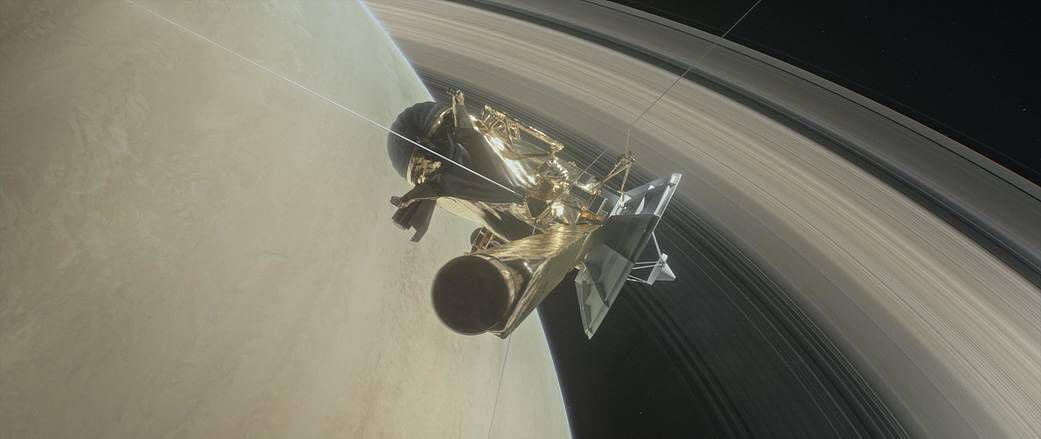
The last 13 years, the spacecraft “Cassini” silently changed our understanding of the Solar system. The Cassini mission is a joint project of the American space Agency NASA and the European space Agency cost of 3.62 billion dollars – consisted in studying the gas giant Saturn and its numerous moons. But tomorrow the mission will come to its literally fiery end. On Friday, at 7:55 am et, the Earth will cease to receive data from Cassini, as the spacecraft with the speed of a meteor fall in the atmosphere of Saturn and would be systematically destroyed. At this point, the astronomers preparing for many years.

All instruments of the spacecraft still work well, however long the mission had spent almost all the fuel needed to correct the orbital path of movement of the probe around Saturn. But instead of just letting the machine get out of control and possibly crash anywhere else, this mission has programmed the computer of the probe entering the atmosphere of Saturn to keep the satellites of the planets and any likely life forms under them.
Despite all the achievements of this spacecraft “Cassini”, so to speak, has always been an outsider. His mission was not as bright as the mission of the unit New horizons flying past Pluto, or any other mission connected with Mars, where for the last couple of decades the American Agency has not sent a single lander and a Rover. Topics related to mission near Saturn, rarely made major news headlines. However, the lack of hype in no way reduced the degree of scientific importance of discoveries made by Cassini.
History Cassini
If you drop the formalities, it began on 15 October 1997, when on Board the launch vehicle the Titan IVB/Centaur Cassini was launched into Earth’s orbit. The launch was a joint – booster output is also in orbit and the probe “Huygens”, built by the European space Agency. This device was designed for landing on the biggest Saturn’s moon Titan where he would be able to convey scientific data to researchers on Earth.
The start was not without incident. There were people who protested the launch of Cassini because of fears of contamination of the environment with plutonium fuel, on the basis of which operates the spacecraft. Before sending Cassini physicist Michio Kaku said that if the launch fails and an explosion of the rocket, the radioactive material will fall the rain on people near the launch complex. NASA and government agencies have hastened to assure everyone that this situation is just impossible. Fortunately, in the end, the launch actually went without any problems.
The two spacecraft arrived at Saturn after 7 years since their launch from the launch complex at Cape Canaveral. “Huygens” landed on Titan on 14 January 2005. Since then, Cassini has performed many orbital revolutions around the planet and its satellites. Thanks to him we got the opportunity to look at this system, understand the features of the planet’s rings.
Satellites
Starting from the huge Titan and ending with the tiny moon Daphnis observations by Cassini has allowed me to learn a lot about satellites this giant ring planet. Saturn and its satellites in the literal sense can be seen as a Solar system in miniature.
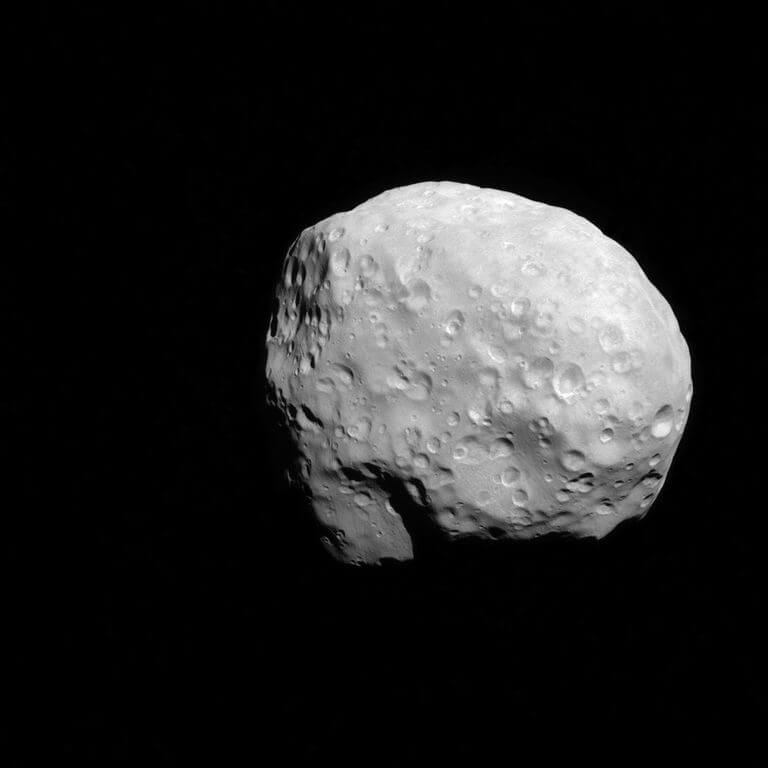
Pimeta
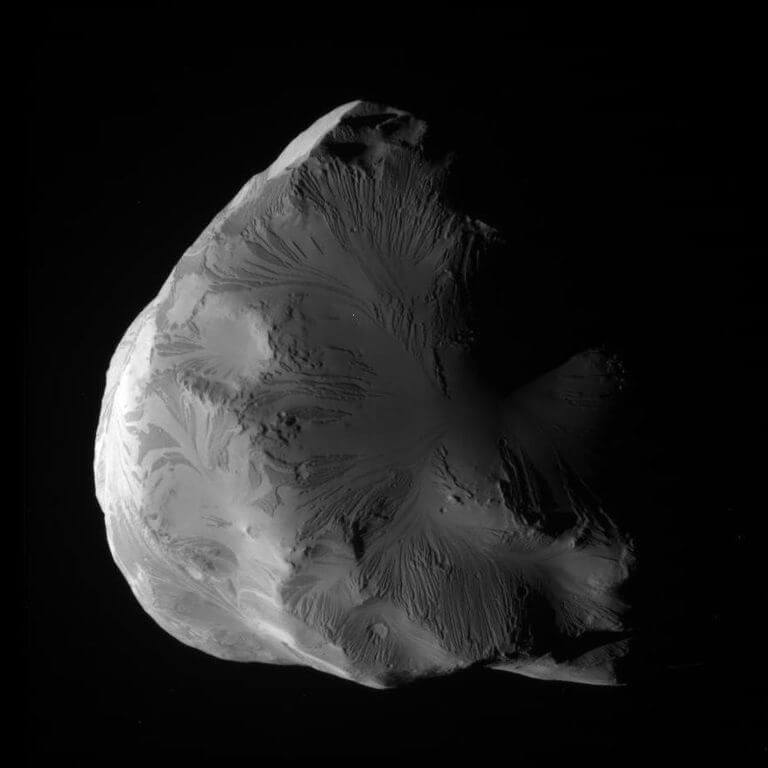
Elena
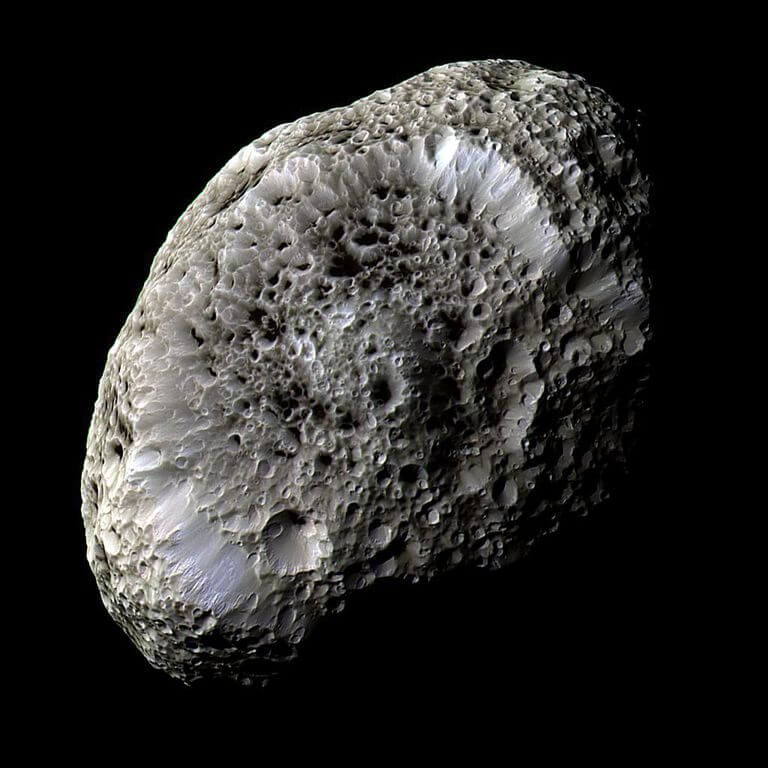
Hyperion
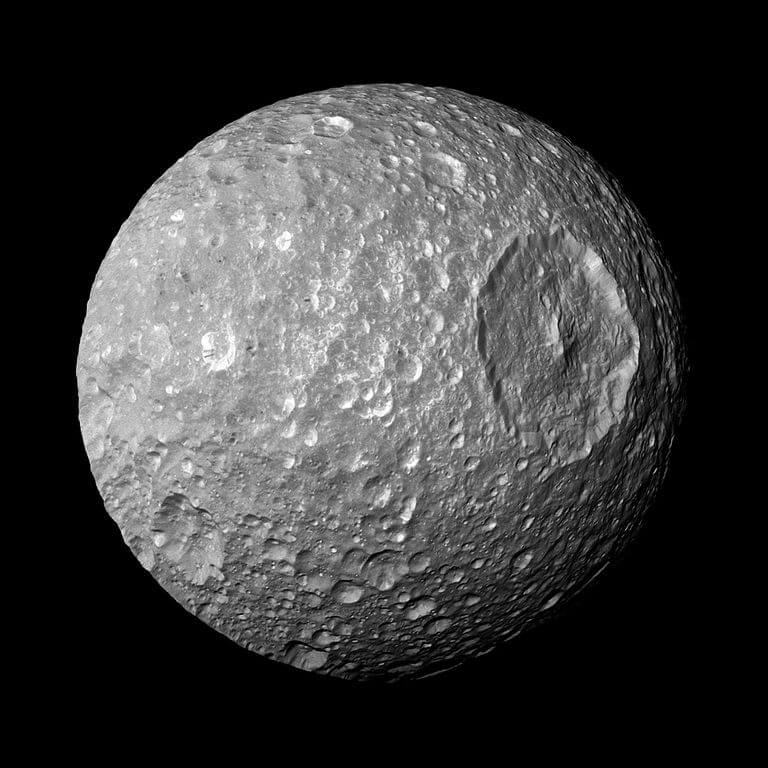
Mimas, satellite, similar to the “death Star”

Pandora

Titanium and Tafia (in the foreground)
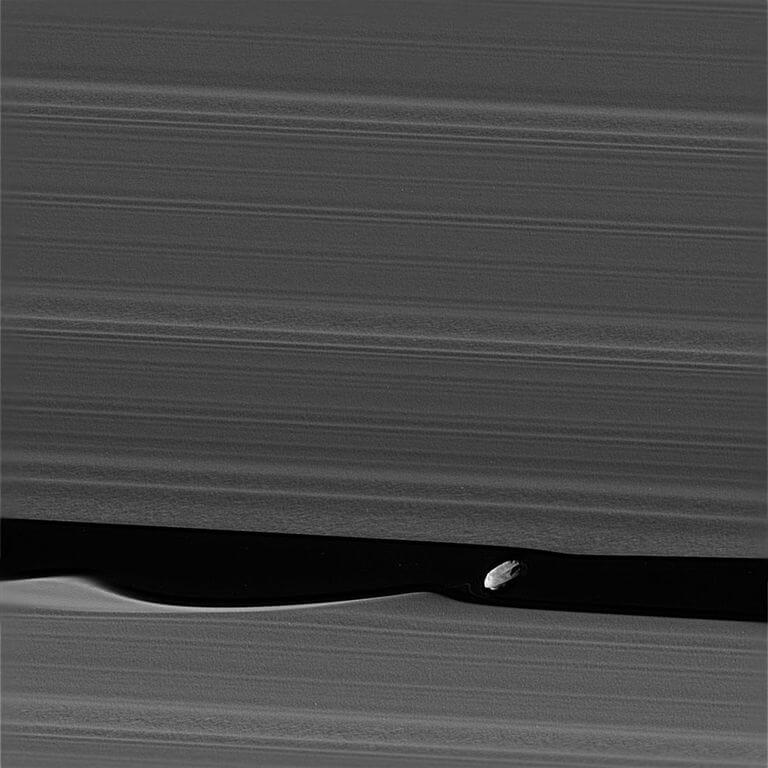
Daphnis creates waves inside the rings of Saturn

Pan (similar to dumpling)
Five of the most interesting discoveries of the Cassini
It is difficult to list all contributions in planetary science who has made “Cassini” over the 13 years of his mission, but quite easy to understand how much this mission means to scientists on Earth. Below are the just some of the most important discoveries made this probe for more than ten years into its work.
The geysers on Enceladus
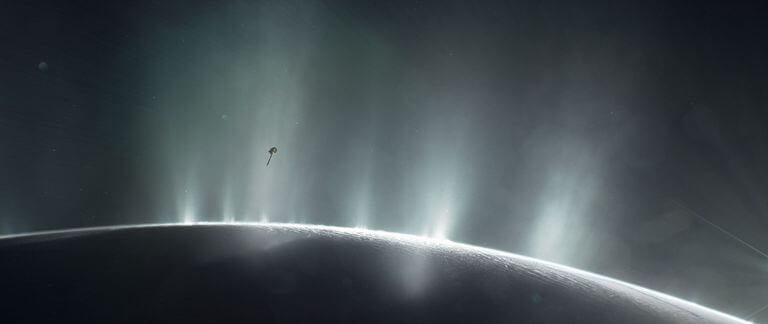
Cassini not only noticed, but also flew through the emission of liquid water launched into space from the subsurface ocean of Enceladus. The opening was amazing. Ocean satellites, quite possibly, has the right chemical composition needed for life, making it one of the principal targets for the search for extraterrestrial life within the Solar system.
“Earth-like” environment of Titan
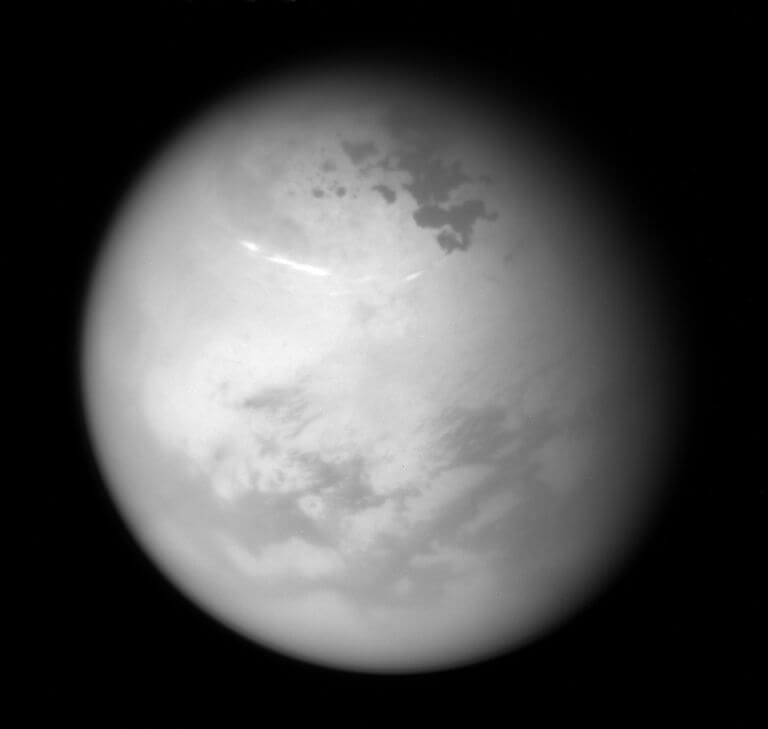
Watching the Titan, we could learn more about myself. The study of one of the largest of Saturn’s moons has opened for us a complex world of lakes of liquid methane and dunes of hydrocarbons. To the untrained observer, the Titan might seem similar to Earth, but it’s clearly the alien planet, which is a perfect example of the diversity among planetary bodies.
Many of Saturn’s moons

Before sending Cassini to Saturn in 1997, scientists had known only of the existence of 18 satellites relay around the ring giant. While the spacecraft for seven years, moved to this planet, researchers uncovered 13 more moons. However, today, thanks to Cassini, we were able to figure out that Saturn is the “Pope” as many as 53 satellites.
The hexagonal storm of Saturn
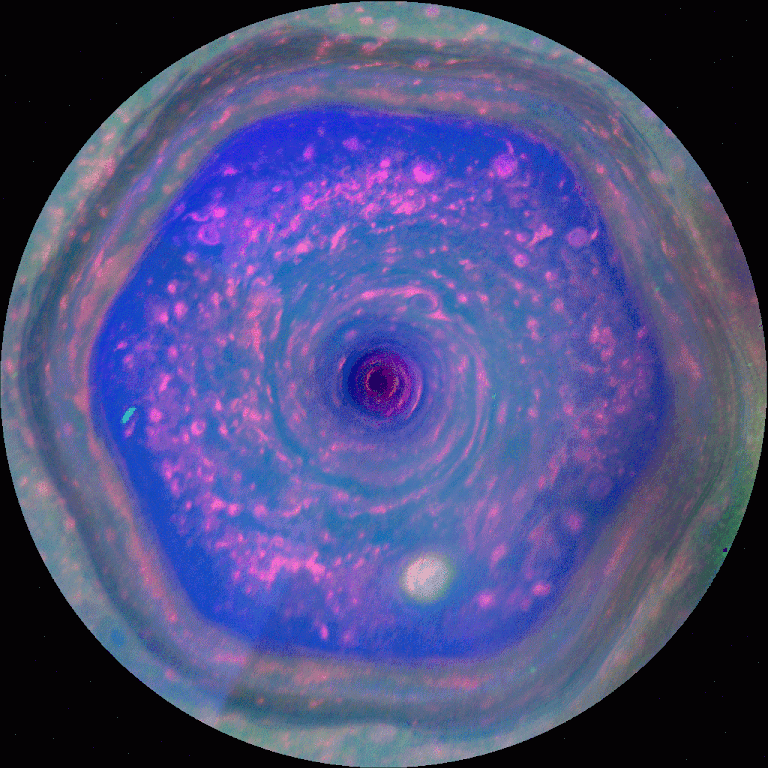
During its work “Cassini” managed to get a really spectacular image of Saturn, but perhaps the most impressive and unique at the same time are photos of the poles of the planet. We were able to examine in detail the hexagonal flow of the atmospheric currents surrounding a powerful storm raging on the North pole of Saturn. According to NASA, the size of this hurricane is 50 times larger than the average hurricane on Earth.
The empty space between Saturn’s rings

Before the climax of the mission “Cassini” took a position between the planet’s rings and Saturn itself. And as it turned out, it is incredibly quiet. Instead of the expected dust eddies, rushing between the planet and rings, Cassini in their last orbital overflights found absolutely empty space.
The mission, which will be missed
Although, as noted above, the Cassini mission was not as bright as Mars, it was very useful for modern astronomy. Every month a probe was sent to Earth to be really unique, previously unseen images and new scientific data. Many Amateur astronomers have built their career on the basis of these data.
The completion of the mission will be a real loss to the scientific and pseudo-scientific community. Especially against the background that, in addition to the probe, which will study of Jupiter’s moon Europe, NASA and other space agencies have no plans, at least in the visible future, to continue to explore the remote horizons of the worlds of the Solar system like Saturn, Neptune and Uranus.
The probe “Cassini”
Nikolai Khizhnyak